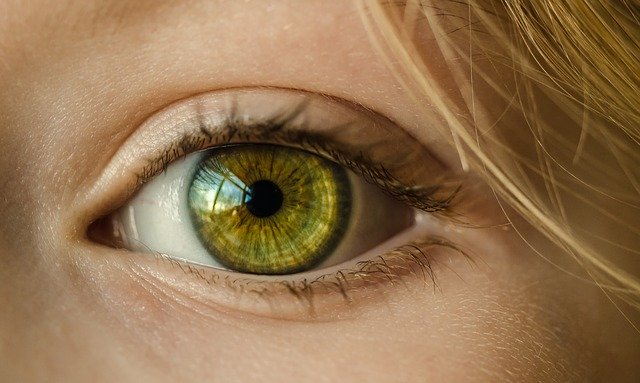
Does your home have 5G protection?
The new 5G mobile network is billed as faster, stronger, and better than any previous wireless technology such as 3G or 4G; the "G" in any of the network names denotes the generation' of wireless technology10,11. However, as 5G bids to bring us greater coverage and faster internet, there aren't many studies that validate its safety8.
The main concern is 5G radiation, which is not your average exposure to electromagnetic field radiation (EMF radiation). EMFs are emitted from all electronic devices (e.g. phones, microwaves, computers), with some EMF radiation being more dangerous than others9. Since 5G is more powerful as it uses much higher, energy-charged frequencies than 4G, users may be exposed to possibly dangerous forms of EMF radiation.
The deployment of 5G networks does not mean you should panic. Below is some useful information that you can use to better understand the functioning of 5G networks as well as useful steps you can take to introduce 5G protection at home and into your life, by minimizing 5G radiation exposure and installing 5G protection devices that could neutralize dangerous electromagnetic waves.

EMF is virtually unavoidable if you're living in a big city.
The Difference Between 4G and 5G
For years, 4G remained the highest performing network, supporting millions of users worldwide. 4G uses low-frequency radio signals that are broadcast at frequencies below 6 GHz, so its EMF imprint is a non-ionizing form of radiation9.
Just like its predecessors 3G and 2G, 4G has used pretty much the same infrastructure that enables your phone's voice and internet connection6. 4G has been brought to households via cell towers that cover a wider geographical area (e.g. a neighborhood, a village, a city, etc.). All 4G towers installed around the country enable us to immediately get someone on the phone when we call them, or instantly send an email that gets to the recipient within the same minute6. These towers keep our devices connected over long distances and through thick objects like trees and walls, exactly because of the frequency of wavelengths they use.
However, 4G falls short to support new emerging technologies such as AI (artificial intelligence) and self-driving cars (among other things), because these computing heavy devices, products and services demand more bandwidth and greater internet speed2,4. This is the main reason why a new generation of wireless signal--that of 5G--has been sought after, so that we can jump into a new phase of data processing, business, and connectivity.
However, to establish a network, 5G uses a swath of the broadcasting spectrum that has never before been used for mobile service1. 5G providers employ millimeter waves that are broadcast at frequencies between 24-86 gigahertz, which is much higher compared to the bands below 6 GHz. They are called millimeter waves since they vary in length from 1 to 10 mm, and until now only operators of satellites and radar systems have used them for real-world application1.
While the millimeter wavelengths that 5G uses are perfect for improving our internet because they can carry much more data, buildings and trees can easily hinder it1. Therefore, 5G needs a much more dense infrastructure of small cells (new technology that replaces the traditional cellular tower); these small cells will have to be on almost every building if a 5G provider wants to create a strong, continuous and widespread network in an urban environment3.
To cover the same area as a single 4G source would, a 5G network needs dozens or hundreds of cells positioned 800 feet from each other1,8. Such a dense constellation of 5G cell stations means that 5G signal will inevitably surround our homes, exposing people to potentially high-risk 5G radiation8. Which may pose a potential threat to public health5.

Exposure to 5G may cause health issues and damage the eyes.
Health Risks Associated with 5G
For the first time ever, we will be using wireless technology such as 5G that employs millimeter waves in the general public arena8. Generally, there is a lack of scientific research that evaluates how 5G's full capacity deployment is going to affect human health.
There is some evidence to show that millimeter waves are mostly absorbed within a few millimeters of human skin and in the surface layers of the cornea (the transparent front layer that enfolds and protects the eye)8, thus prolonged exposure to millimeter waves could possibly contribute to the development of cancers such as melanoma (skin cancer), ocular melanoma (eye cancer), or other conditions such as sterility8.
According to scientists, 5G radiation exposure might also bring other short-term and long-term health risks, potentially affecting our peripheral nervous system, immune, and/or cardiovascular system8.
And, this is just a fraction of what we are potentially facing5.
5G Protection: What Can You Do Personally to Protect Yourself?
As 5G networks and other EMF sources of radiation exponentially rise, it's important for people to learn how to protect themselves from any possible unwanted harms. It may be critical to protect both your body and your home from this emerging wireless technology.
Here's what you can do to increase your protection from 5G:
- Stay away from devices emitting EMF radiation. Especially if they're running on 5G.
Some mobile manufacturers like Apple recommend their users a 10-millimeter space between their iPhones and their bodies7. The idea is practicing some form of distancing from your device, thus reducing your exposure to 5G exposure. When you're sleeping keep your phone away in another room, or if you need it close to you (e.g. for the alarm next morning), put it on airplane mode so it has no signal.
When you're on the move, put your phone in a backpack or purse or you can use an EMF radiation protection device.
- Protect your home from 5G exposure
The close proximity of 5G infrastructure to your home also means that you need to install 5G protection devices around your house in order to protect you from any potential harm of 5G millimeter waves and other EMF radiation. With our 5G protection devices, you can protect yourself in your home from 5G cell stations and of EMG emitting devices (e.g. WIFI, 4G, etc.).
- Stay Informed & Ask Questions
Since 5G is a new technology, we can expect that there will be more scientific research on its effects on our health and our environment coming soon. Stay tuned to our newsletter and blogs for any and all updates!
Finally, ask questions. We are here to answer any questions which you may have related to the new 5G technology or any other EMF radiation. We love learning! You can reach out to us via Facebook or Twitter, submit your question or ask additional information about any of the cutting-edge 5G protection devices that we have to offer.
Follow the Light Lounge™ blog to stay updated on the most exciting scientific research from around the world that our experienced team of science writers and Light Therapy experts prepare for you every week.
CITATIONS:
- 5G Bytes: Small Cells Explained
- 5G’s Important Role in Autonomous Car Technology
- Is 5G Worth the Risks?
- Brave New World: Everything Gets Smarter When 5G and AI Combine
- How 4G Works
- We Have No Reason to Believe 5G Is Safe
- Radiation: Electromagnetic fields
- What is 5G?
- What is 5G? A Guide to The Future of Mobile Connectivity